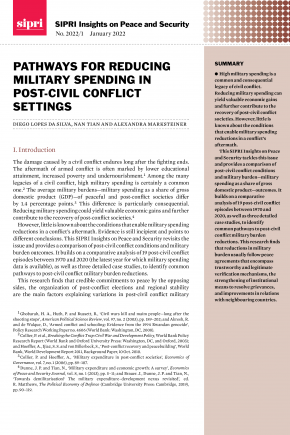Pathways for Reducing Military Spending in Post-civil Conflict Settings

High military spending is a common and consequential legacy of civil conflict. Reducing military spending can yield valuable economic gains and further contribute to the recovery of post-civil conflict societies. However, little is known about the conditions that enable military spending reductions in a conflict’s aftermath.
This SIPRI Insights on Peace and Security tackles this issue and provides a comparison of post-civil conflict conditions and military burden—military spending as a share of gross domestic product—outcomes. It builds on a comparative analysis of 19 post-civil conflict episodes between 1970 and 2020, as well as three detailed case studies, to identify common pathways to post-civil conflict military burden reductions. This research finds that reductions in military burden usually follow peace agreements that encompass trustworthy and legitimate verification mechanisms, the strengthening of institutional means to resolve grievances, and improvements in relations with neighbouring countries.
I. Introduction
II. Military spending in post-civil conflict settings
III. Analytical strategy and data
IV. Comparative analysis
V. Case studies
VI. Conclusions


